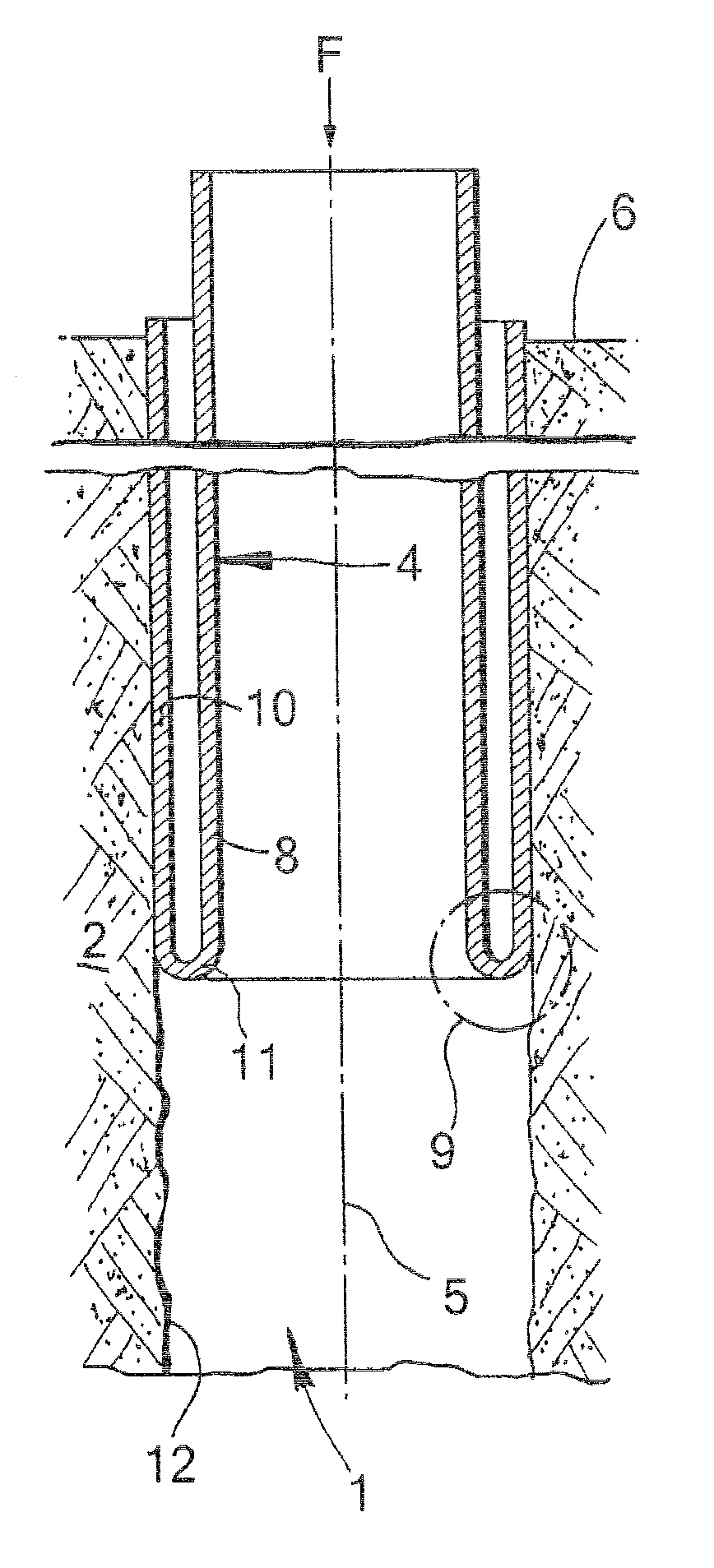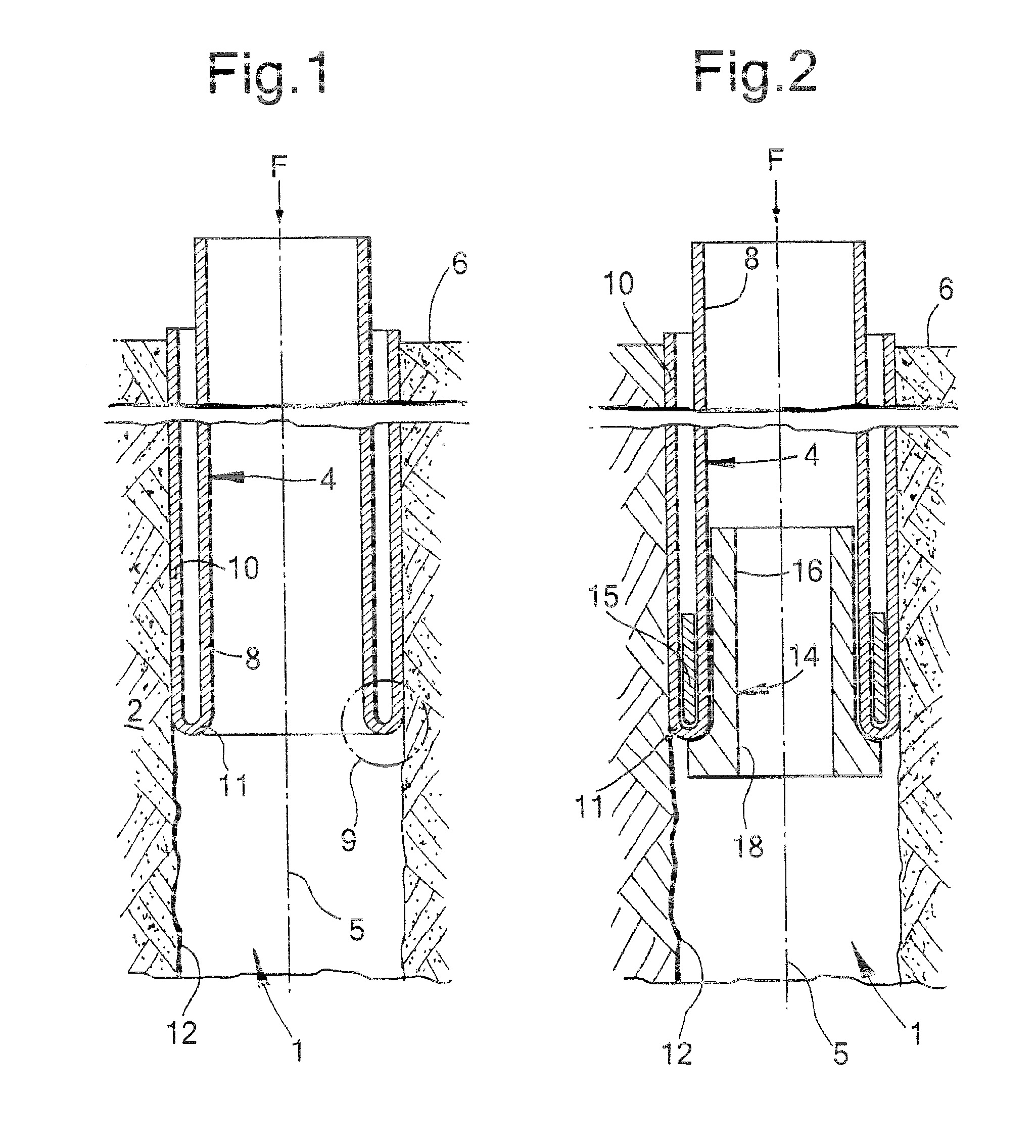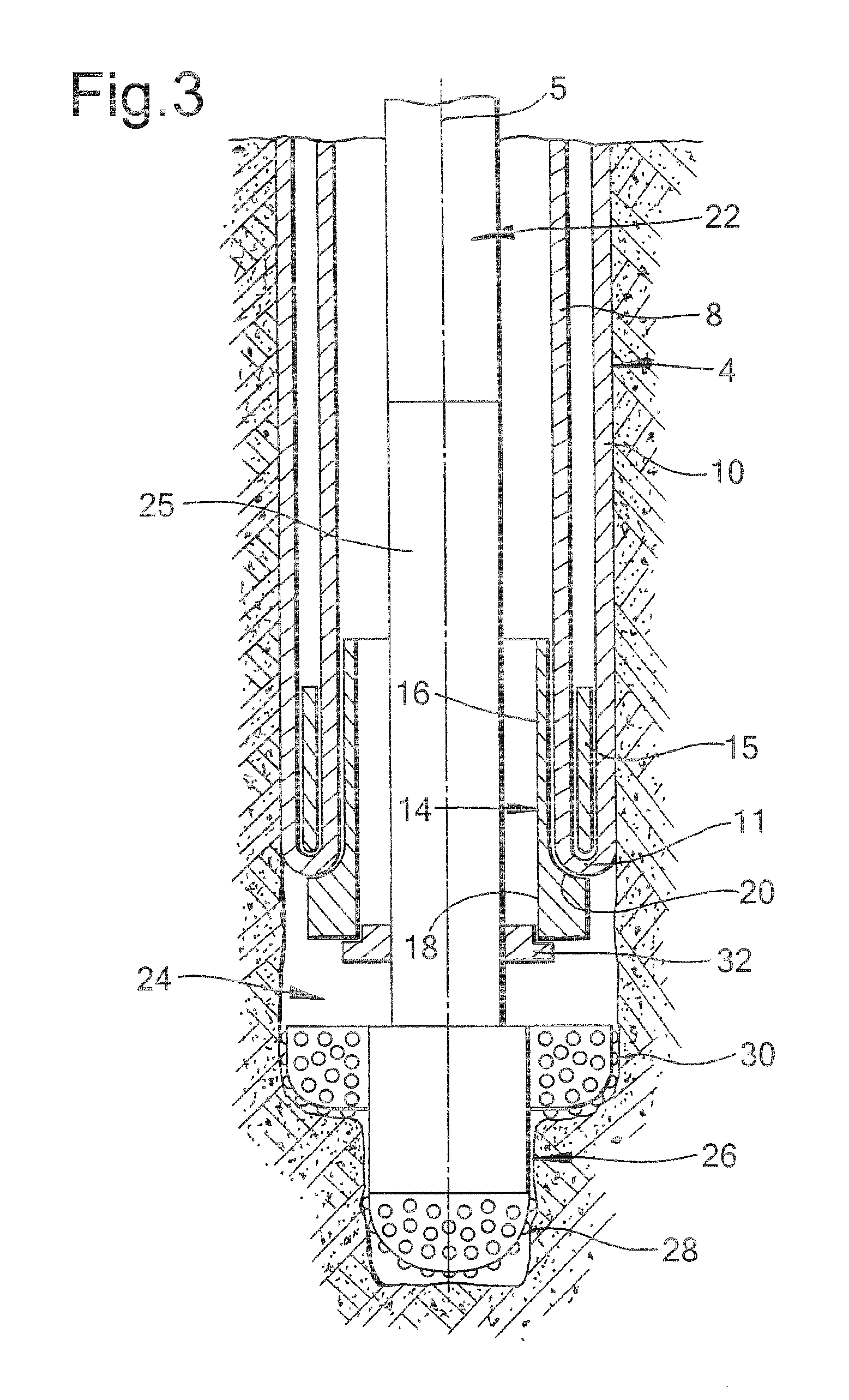Method of radially expanding a tubular element in a wellbore provided with a control line
a control line and tubular element technology, applied in the direction of borehole/well accessories, sewer pipelines, mechanical devices, etc., can solve the problems of high friction force that needs to be overcome, and the expander becomes stuck in the tubular element, so as to increase the collapse resistance of the expanded tubular section
- Summary
- Abstract
- Description
- Claims
- Application Information
AI Technical Summary
Benefits of technology
Problems solved by technology
Method used
Image
Examples
Embodiment Construction
[0039]Referring to FIG. 1 there is shown a system comprising a wellbore 1 formed into an earth formation 2, and a radially expandable tubular element in the form of an expandable steel liner 4 extending from surface 6 downwardly into the wellbore 1, the liner having a central longitudinal axis 5. The liner 4 has a radially expanded tubular section 10 and a remaining tubular section in the form of unexpanded section 8 extending within the expanded section 10. The wall of the unexpanded section 8 bends, at its lower end, radially outward and in axially reverse (i.e. upward) direction so as to form a U-shaped lower section 11 interconnecting the unexpanded section 8 and the expanded section 10. The U-shaped lower section 11 defines a bending zone 9 of the tubular element 4. The expanded liner section 10 is axially fixed to the wellbore wall 12 by virtue of frictional forces between the expanded section 10 and the wellbore wall 12 due to compression of the expanded section 10 against th...
PUM
 Login to View More
Login to View More Abstract
Description
Claims
Application Information
 Login to View More
Login to View More - R&D
- Intellectual Property
- Life Sciences
- Materials
- Tech Scout
- Unparalleled Data Quality
- Higher Quality Content
- 60% Fewer Hallucinations
Browse by: Latest US Patents, China's latest patents, Technical Efficacy Thesaurus, Application Domain, Technology Topic, Popular Technical Reports.
© 2025 PatSnap. All rights reserved.Legal|Privacy policy|Modern Slavery Act Transparency Statement|Sitemap|About US| Contact US: help@patsnap.com



